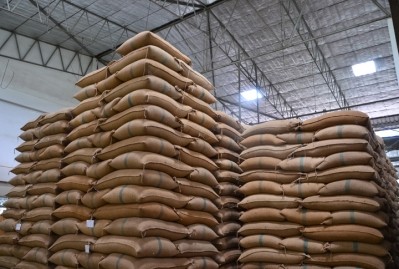US: Trade uncertainty, financial outlook drop ag industry expectations
Purdue University’s Center for Commercial Agriculture and the CME Group released details they gathered about the US agricultural economy for their September Ag Economy Barometer last week. The report surveys a nationwide selection of 400 agricultural producers regarding their perspectives on the industry.
The scores for the sentiment-based barometer have been “unusually volatile” for the past few months, said report authors Jim Mintert, director of the center for commercial agriculture and professor in the department of agricultural economics at Purdue University and Michael Langemeier, professor in the department of agricultural economics at Purdue University.
After a sharp drop in sentiment in July, there had been a period of improved outlook in August, before the barometer dropped to its lowest score in two years.
“The ag economy barometer declined significantly this month to a reading of 114 from a reading of 129 a month ago,” said Mintert in a presentation on the barometer. “It’s the second time in the last three months that we’ve seen a sharp decline in the barometer as financial conditions in the ag sector have deteriorated.”
The reading is a composite of scores generated from a series of indices relating to questions, he said. Declines for both the index of current conditions and future expectations weighed on the overall score for the most recent barometer reading.
“The decline in the barometer this month was driven both by a decline in the index of future expectations, which fell to 122 from 132 a month ago, and especially a decline in the index of current conditions, which fell to 96 from 121 a month ago,” he said. “That was one of the largest declines in the index of current conditions we’ve seen since we started collecting data in the fall of 2015.”
Barometer highlights
Additionally, the results also reflected continuing concerns about the effects of trade conflicts, the report authors said. Especially regarding trade with China.
Favorable weather and record yields bringing large supplies for feed crops including corn and soybeans, along with low prices, also are a factor, they said. Feed crop and agricultural producers thoughts on their financial situations have declined along with expectations looking forward.
When respondents were asked if they thought their position was better off, the same as or worse than it had been last year, the producers saying they were worse off increased to 54%, said Mintert. “As you look at the data, it’s the worst reading we’ve had in well over a year with respect to the perspective of people saying they were worse off than a year earlier,” he added.
However, that perspective also covered the agricultural economy, the report authors said. About 69% of respondents said they are anticipating “bad times” for the ag economy in the next 12 months – up from the 52% that felt that way in August.
The amount of producers anticipating bad times over the next five years increased to 41%, they added.
Looking at the potential for large farm investments or purchases, about 20% said it was a good time to make a large farm investment and 78% said it was a bad time, they said.
“When we combined those two readings both the good time and the bad time into a single index – the index focused on machinery and building investments – it gave us the lowest reading we’ve had since we started collecting data in the fall of 2015,” added Mintert in his presentation.
When asked about the influence of trade conflicts, about 72% of producers said they expect their farm’s net income to drop by more than 10% because of the conflicts, the authors said. However, about 36% said they thought the drop could be more than 20%.
The change in sentiment was a decline from August when about 66% of producers said they thought the drop in income would be more than 10%, they said.
The reactions to the proposed relief plan put forward by the US Department of Agriculture (USDA) and the Trump administration was similar to thoughts presented in August before plan details were known, the authors said. When respondents were asked for the September barometer, if they were relieved about the potential effect of the tariffs on their farm’s income by the plan, 45% said they were somewhat relieved and 45% said they were not relieved at all.
Soybeans are among the commodities that have been “hardest hit” by China’s tariffs, said the authors. When asked about storage plans for the current crop, about 18% of producers said they are planning to store more of the feed crop than they usually do, but about 65% said they were not intending to keep more.
Of those producers who said they would be storing the same amount, or more of their soybeans, about 46% said they were anticipating storing the feed crop until the trade conflict was resolved, they said. And among those who said they would be storing more than they usually did, the majority said the ongoing trade uncertainty with China was the influencing factor in that decision.










